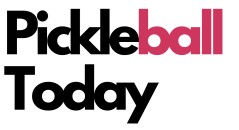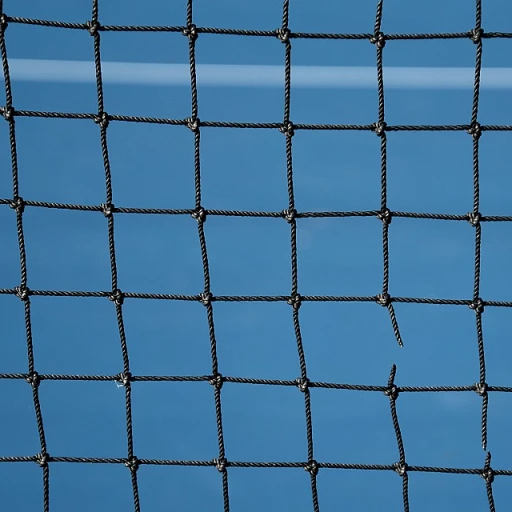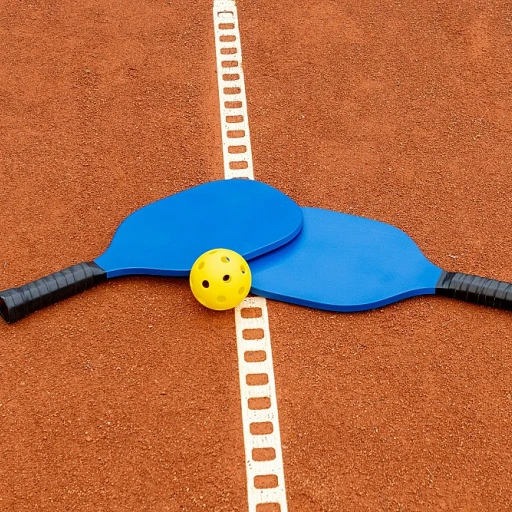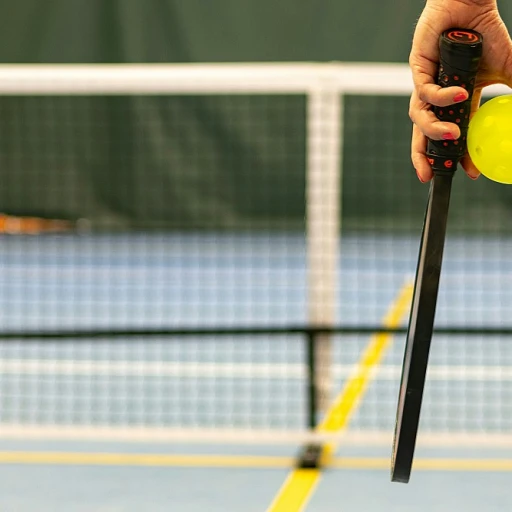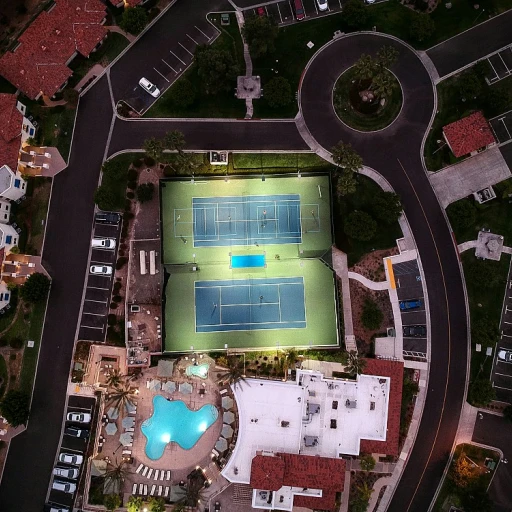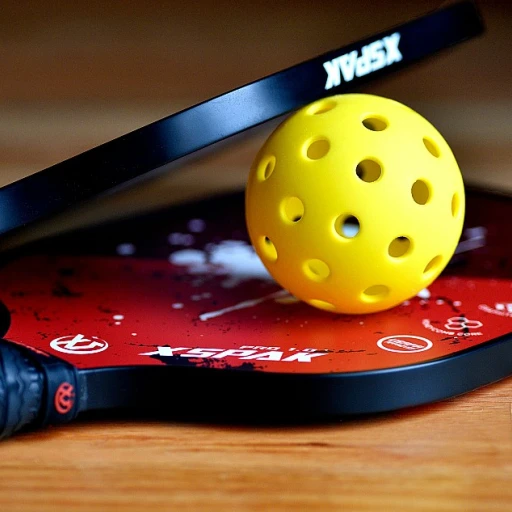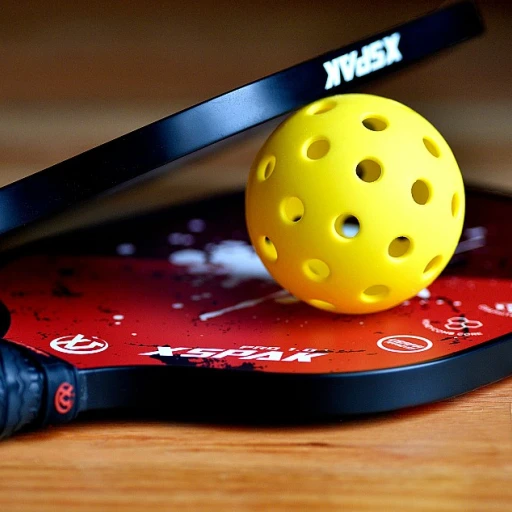
Understanding the dink shot in pickleball
What Makes the Dink Unique in Pickleball?
The dink is a soft, controlled shot played close to the net in pickleball. Unlike power shots, the dink is all about finesse and precision. It’s a favorite among players who want to master the game and outmaneuver their opponents with smart placement rather than speed. Many pros consider the dink a must-have skill, especially for those aiming to improve their game and become a true dink master.
Why Every Player Should Learn the Dink
Mastering the dink can help you control the pace of the rally and force your opponent into making mistakes. It’s a shot that requires patience, touch, and a good understanding of paddle control. Whether you’re training with a partner or using a pickleball training aid like a honeycomb aluminum board with a tall base and sided design, practicing the dink for just a few minutes a day can make a big difference. Many trainers recommend incorporating dink drills into your daily routine to see improvement in just a few business days.
The Role of the Dink in the Modern Game
Today’s best players use the dink as a strategic weapon. It’s not just about keeping the ball in play; it’s about setting up winning shots and putting pressure on your opponent. If you love the game and want to become a pro, focusing on your dink skills is essential. There are free resources and training tips available online, and you can even explore shot drilling techniques to further enhance your training.
- Helps you control the pace of the rally
- Forces errors from your opponent
- Essential for competitive play
- Improves your overall strategy
When considering your next paddle purchase, look for features like honeycomb aluminum construction for better control. Many training aids offer free shipping and come with a privacy policy, making it easy to get started. Don’t forget to write a review after your purchase to help other players find the best products for their needs.
Key techniques for perfecting your dink
Essential Elements for a Consistent Dink
To master the dink in pickleball, players need to focus on a few core techniques that help transform a basic shot into a pro-level tool. The dink is not just about tapping the ball over the net; it’s about control, precision, and consistency. Even a few minutes a day of focused training can help you improve your game and become a true dink master.
- Grip and Paddle Position: A relaxed grip is key. Holding your paddle too tightly can reduce your touch and control. Many players find that using a continental grip helps with both forehand and backhand dinks. For more on optimizing your grip, check out how to improve your pickleball grip for better performance.
- Stance and Balance: Keep your knees slightly bent and weight balanced on the balls of your feet. This athletic position allows for quick adjustments and helps you react to low, fast, or spinning shots.
- Soft Hands and Controlled Swing: The best dinks come from a gentle, controlled swing. Let your paddle do the work, using a short backswing and follow-through. The goal is to keep the ball low and just over the net, making it difficult for your opponent to attack.
- Contact Point: Try to make contact with the ball in front of your body, at waist height. This gives you the best chance to control the direction and height of your dink.
- Footwork: Good footwork is essential. Move your feet to get into the right position rather than reaching with your arm. This helps maintain balance and accuracy.
Using a quality paddle, such as those with a honeycomb aluminum core or a sided design, can also help you develop a more consistent dink. Some players love the feel and control these paddles provide, and they often come with free shipping and a fair price when you purchase from reputable sources. If you’re serious about training, consider a pickleball training aid or a tall base trainer to help you practice at home. Even just a few minutes a day can make a big difference in your progress.
Remember, becoming a dink master pro takes time and dedication. The right training, equipment, and mindset will help you improve your skills and enjoy the game even more. If you’re looking to write a review or learn more about privacy policy when making a purchase, always check the business days for shipping and support. Consistent practice and the right tools are the best way to improve your game and become a true pro on the court.
Common mistakes and how to avoid them
Why dinks go wrong and how to fix them
Even experienced pickleball players can struggle to master the dink. This shot, while simple in concept, requires precision and patience. Here are some of the most common mistakes players make when working on their dink, and practical ways to improve your game:
- Hitting too hard: Many players use too much force, sending the ball too high or deep. Focus on a soft touch with your paddle, letting the honeycomb aluminum surface do the work. A gentle motion helps keep the ball low and controlled.
- Standing too upright: If you don’t bend your knees, you lose balance and control. Use a tall base but stay low, allowing for better reach and stability. This helps you react quickly and maintain accuracy.
- Improper paddle angle: The angle of your paddle is crucial. If it’s too open or closed, your dink won’t clear the net or will pop up for your opponent to attack. Practice with a training aid or sided design paddle to develop muscle memory.
- Lack of consistency: Dinking is about repetition. Even just a few minutes a day of focused training can help you become a dink master. Use a board or trainer to get free, repetitive practice at home.
- Ignoring strategy: Dinking isn’t just about technique. It’s also about outsmarting your opponent. Learn how to use the dink to set up winning shots and control the pace of the game. For more on positioning and advanced tactics, check out this guide on understanding the dynamics of stacks in pickleball.
To truly improve, review your own play and consider tools like a pickleball training aid. Many products offer free shipping and competitive price points, making it easy to purchase and start training within a few business days. Don’t forget to write a review if you find a trainer that helps you love the game even more. Always check the privacy policy before making a purchase.
Strategic use of the dink in competitive play
Making Your Dink a Tactical Weapon
The dink is more than just a soft shot over the net; it’s a strategic tool that can help you control the pace and rhythm of the game. When you master the dink, you force your opponents to play at your tempo, often drawing them out of position and creating openings for winning shots. Pro players use the dink to set up aggressive plays, especially when facing tough opponents who love to attack.- Change of Pace: Use the dink to slow down fast rallies. This can disrupt the rhythm of aggressive players and give you time to reset your position.
- Target Weaknesses: Aim your dinks at your opponent’s backhand or at their feet. Most players struggle to return low, soft shots, especially when they’re forced to move quickly.
- Mix Up Placement: Alternate between cross-court and straight dinks. This keeps your opponent guessing and can open up the court for a finishing shot.
- Patience Pays Off: Don’t rush the point. The best players wait for the right moment to attack, using the dink to build pressure until their opponent makes a mistake.
Using the Right Equipment for Strategic Play
Your paddle choice can impact your ability to execute precise dinks. Many pros prefer paddles with a honeycomb aluminum core for better control. A training aid with a tall base and sided design can help you practice consistent dinks at home. Investing in the best pickleball training equipment doesn’t have to break the bank; compare price and shipping options before you purchase. Some trainers offer free shipping within a few business days, making it easier to get started.Board Awareness and Court Positioning
Stay aware of your position on the board. The non-volley zone, or kitchen, is where most dinking battles happen. Keep your feet behind the line and use your paddle to reach for low balls. Training for just a few minutes a day can help you improve your court awareness and reaction time.Practice Makes Perfect
Consistent training is key to becoming a dink master. Use drills and exercises to improve your touch and accuracy. Even a few minutes a day with a quality trainer can make a big difference in your game. If you’re looking for a training aid, check for reviews and privacy policy details before making a purchase. Remember, mastering the dink is about more than technique—it’s about using your skills to outthink and outplay your opponents. With the right approach, you’ll improve your game and start to love the strategic side of pickleball.Drills and exercises to improve your dink skills
Essential Dink Training Drills for All Levels
To master the dink and truly improve your pickleball game, consistent practice with targeted drills is key. Whether you are a beginner or aiming to play like a pro, these exercises will help you develop control, touch, and confidence at the net. Many players love how these drills can be done with minimal equipment, making them accessible and free to start.
- Wall Dinking: Use a board or wall as your training partner. Stand a few feet away and dink the ball softly against the surface, focusing on keeping the ball low. This solo drill is great for improving paddle control and touch. Try to maintain a rally for several minutes a day.
- Cross-Court Dink Rally: Pair up with another player and dink diagonally from one kitchen corner to the other. This helps you master the angled shot and work on footwork. Challenge yourself to see how many consecutive dinks you can achieve in a row.
- Target Practice: Place cones or markers on the court and aim your dinks at them. This drill will help you develop precision and strategic placement, which is crucial in competitive play. Use a sided design paddle or honeycomb aluminum paddle to test different feels.
- Moving Dink Drill: Start at the baseline and move forward, dinking every few steps until you reach the net. This exercise improves your transition game and helps you maintain balance and control under pressure.
How to Structure Your Dink Training Sessions
For best results, dedicate 10 to 15 minutes a day to focused dink drills. Many trainers recommend short, intense sessions over long, unfocused practice. If you are using a pickleball training aid, such as a tall base or rebound board, you can maximize your solo practice time. These tools are available for purchase online, often with free shipping and competitive price points. Check the business days for delivery and always review the privacy policy before making a purchase.
| Drill | Equipment Needed | Skill Improved |
|---|---|---|
| Wall Dinking | Wall or board, paddle, ball | Control, consistency |
| Cross-Court Dink Rally | Partner, paddle, ball | Angle, footwork |
| Target Practice | Cones/markers, paddle, ball | Accuracy, placement |
| Moving Dink Drill | Paddle, ball | Transition, balance |
Remember, the journey to becoming a dink master or even a master pro is about steady improvement. Write a review of your progress every few days to track what helps you most. With the right drills and dedication, you will see your pickleball skills rise and your love for the game grow stronger.
Expert tips from pickleball pros
Advice from Top-Level Players
Pickleball pros often emphasize that mastering the dink is not just about technique, but also about mindset and consistent training. Here are some expert-backed insights to help you become a true dink master:- Consistency Over Power: The best players focus on control and consistency. Practicing your dink every day, even for just a few minutes, can lead to significant improvement. Use a training aid or a tall base board to simulate real-game scenarios.
- Quality Equipment Matters: Investing in a paddle with a honeycomb aluminum core and a sided design can help you feel the ball better and improve your touch. Many pros recommend testing different paddles before making a purchase to find the one that fits your style and budget. Look for options with free shipping and check the price and reviews before you buy.
- Routine and Drills: Set aside time each day for focused pickleball training. Simple drills, like cross-court dinks or using a trainer board, can help you build muscle memory. Some players love to challenge themselves with a set number of successful dinks in a row before ending their session.
- Strategic Play: Dinking is not just a defensive move. Pros use the dink to set up offensive shots and control the pace of the game. Observing how top players use the dink in competitive matches can provide valuable insights for your own strategy.
- Community and Feedback: Don’t hesitate to ask for feedback from other players or write a review of your favorite training aids. Engaging with the pickleball community can help you discover the best drills, trainers, and equipment to improve your game.
